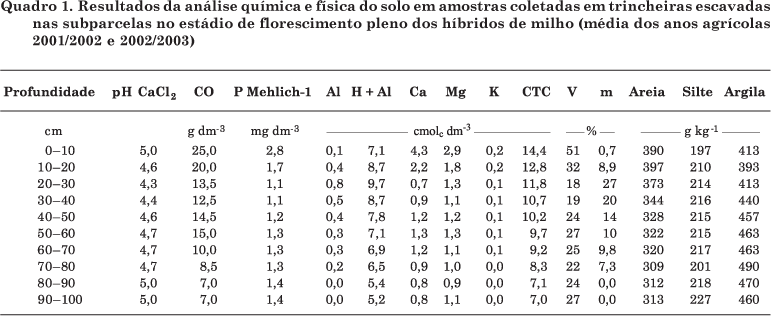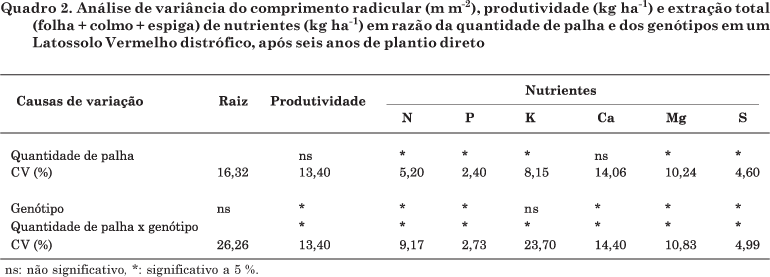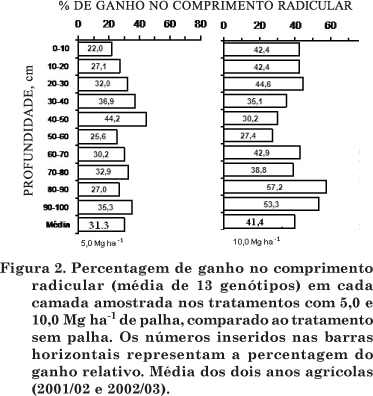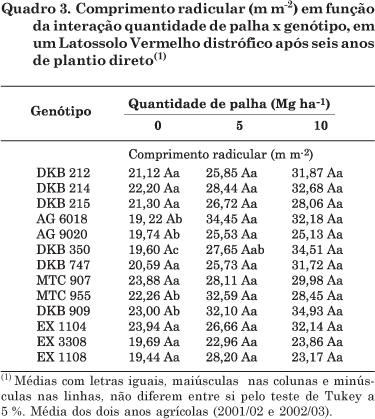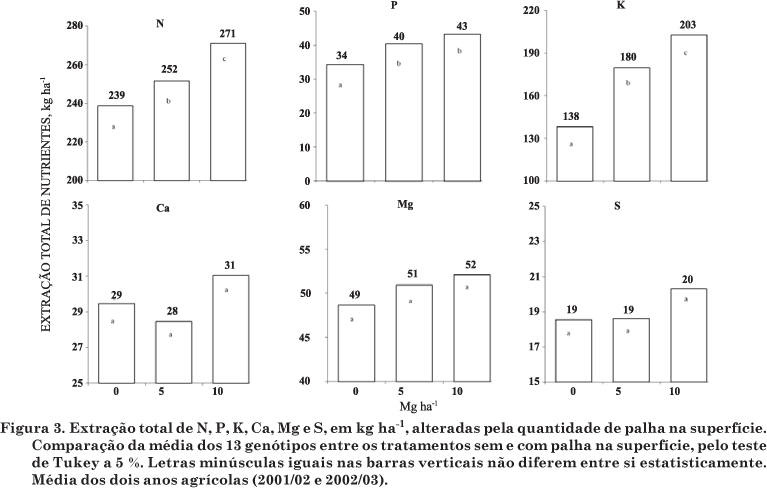Crop residues on the soil surface act mainly as protection against raindrop impact, reducing aggregate disruption, runoff, sediment transport and consequently, erosion. This protection can have significant effects on the corn plant characteristics. The objective of this study was to evaluate the effect of the amount of black oat residues on no-tillage root development, nutrient uptake and grain yield of corn genotypes. The experiment was conducted in an Oxisol, in a randomized block design in split plots with three replications. The main plot was represented by the amount of black oat residues on the soil surface (0, no residues, 5.0 and 10.0 Mg ha-1) and sub-plots consisting of 13 maize genotypes. The amount of crop residues affected root length significantly, at the time of leaf burning. The interaction between crop residues x genotype affected the variables in this study significantly. The maize root system was stimulated by additional doses of black oat residues, both in the soil surface (0-20 cm) and the subsurface layer (50-100 cm). The increased amount of crop residue on the soil surface resulted in greater N, P and K uptake and did not affect the uptake of Ca, Mg and S by the corn plants.
Zea mays; root system; crop residue

